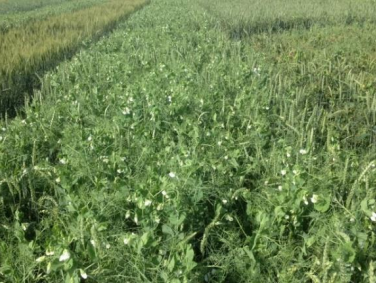Problem: The Belgian climate is not suitable for growing yellow peas in monoculture. This is due to the combination of wind and rain that causes the peas to lodge.
Solution: One solution is to combine the yellow peas with wheat. This allows for a good exchange of services between these two crops, as the peas provide nitrogen to the cropping system while the wheat acts as a support for the pea.
Download the resource below.



